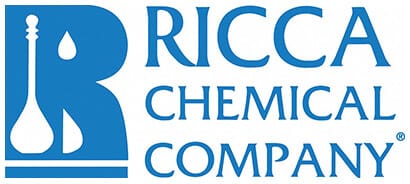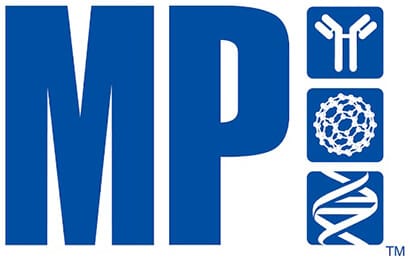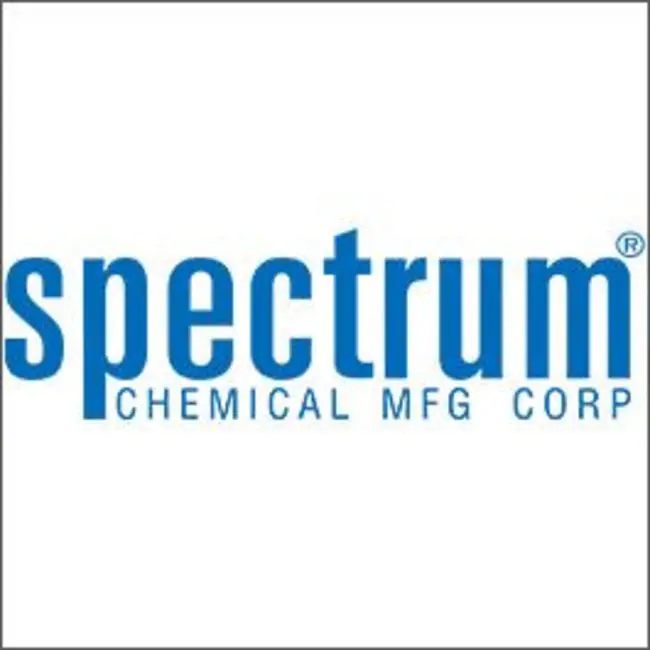25µg
Showing all 36 results
-
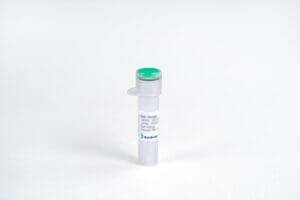
BD-1, Human
$142.31 Add to cart View Product DetailsDefensins (alpha and beta) are cationic peptides with a broad spectrum of antimicrobial activity that comprise an important arm of the innate immune system. The α-defensins are distinguished from the β-defensins by the pairing of their three disulfide bonds. To date, four human β-defensins have been identified; BD-1, BD-2, BD-3 and BD-4. β-defensins are expressed on some leukocytes and at epithelial surfaces. In addition to their direct antimicrobial activities, they are chemoattractant towards immature dendritic cells and memory T cells. The β-defensin proteins are expressed as the C-terminal portion of precursors and are released by proteolytic cleavage of a signal sequence and, in the case of BD-1 (36 a.a.), a propeptide region. β-defensins contain a six-cysteine motif that forms three intra-molecular disulfide bonds. β-Defensins are 3-5 kDa peptides ranging in size from 33-47 amino acid residues.
-

BDNF, Human
$194.06 Add to cart View Product DetailsBDNF, also known as brain-derived neurotrophic factor and abrineurin, is a neurotrophin belonging to the NGF-beta family. It is expressed highly in the brain, and moderately in the heart, lung, skeletal muscle and placenta. BDNF signals through its high affinity receptor gp145/trkB to exert neurotrophic properties. It has been shown to be involved in the survival and differentiation of both the central and peripheral nervous system. Specifically, BDNF regulates synaptic transmission, axonal growth and path-finding, as well as dendritic growth and morphology.
-

EREG, Human
$163.88 Add to cart View Product DetailsEpiregulin is a member of the EGF family of growth factors which includes, among others, epidermal growth factor (EGF), transforming growth factor (TGF)-alpha, amphiregulin (ARG), HB (heparin-binding)-EGF, betacellulin, and the various heregulins. It is expressed mainly in the placenta and peripheral blood leukocytes and in certain carcinomas of the bladder, lung, kidney and colon. Epiregulin stimulates the proliferation of keratinocytes, hepatocytes, fibroblasts and vascular smooth muscle cells. It also inhibits the growth of several tumor-derived epithelial cell lines. Human Epiregulin is initially synthesized as a glycosylated 19.0 kDa transmembrane precursor protein, which is processed by proteolytic cleavage to produce a 6.0 kDa mature secreted sequence.
-

FGF-4, Human
$86.25 Add to cart View Product DetailsFibroblast Growth Factor-4 (FGF-4) also known as K-FGF is a heparin-binding growth factor of the FGF family.It was identified by its oncogenic transforming activity. FGF-4 and FGF-3 are located closely on chromosome 11. FGF-4 and its receptors (FGF R1c, 2c, 3c and 4) play an important role in the regulation of embryonic development, cell proliferation, and cell differentiation. FGF-4 is required for normal limb and cardiac valve development during embryogenesis.
-

Fractalkine/CX3CL1, Human
$94.88 Add to cart View Product DetailsChemokine (C-X3-C motif) ligand 1 (CX3CL1) is a known member of the CX3C chemokine family. It is also commonly known under the names fractalkine (in humans) and neurotactin (in mice). The polypeptide structure of CXC3L1 differs from the typical structure of other chemokines. For example, the spacing of the characteristic N-terminal cysteines is different; there are three amino acids separating the initial pair of cysteines in CX3CL1, while there are none in CC chemokines and only one in CXC chemokines. CX3CL1 is produced as a long protein (with 373-amino acid in humans) with an extended mucin-like stalk and a chemokine domain on top. The mucin-like stalk allows it to bind to the surface of certain cells. Soluble CX3CL1 potently chemoattracts T cells and monocytes, while the cell-bound chemokine promotes strong adhesion of leukocytes to activated endothelial cells, where it is primarily expressed. CX3CL1 can signal through the chemokine receptor CX3CR1.
-

GDNF, Mouse
$172.50 Add to cart View Product DetailsGlial-Derived Neurotrophic Factor, also known as GDNF and ATF-1, is a neurotrophic factor belonging to the TGF-beta family. It is expressed in both central nervous system (CNS) and non-CNS tissues. GDNF signals through a receptor system composed of a RET and one of the four GFR alpha receptors. It promotes the survival and differentiation of dopaminergic neurons, and increases their high-affinity dopamine uptake. In a mouse Parkinson’s Disease model, GDNF has been shown to improve bradykinesia, rigidity, and postural instability. GDNF has also been shown to regulate kidney development, spermatogenesis and affect alcohol consumption.
-

GRO alpha/CXCL1, Human
$155.25 Add to cart View Product DetailsChemokine (C-X-C motif) ligand 1 (CXCL1) is a small cytokine belonging to the CXC chemokine family that was previously called GRO1 oncogene, GRO-α, KC, neutrophil-activating protein 3 (NAP-3) and melanoma growth stimulating activity, alpha (MSGA-α). Human GRO-α, GRO-β (MIP2α),and GRO-γ (MIP2β)are products of three distinct, nonallelichuman genes. GRO-β and GRO-γ share 90% and 86% amino acid sequence homology with GROα, respectively. All three isoforms of GRO are CXC chemokines that can signal through the CXCR1 or CXCR2 receptors. GRO expression is inducible by serum or PDGF and/or by a variety of inflammatory mediators, such as IL-1 and TNF, in monocytes, fibroblasts, melanocytes and epithelial cells. In certain tumor cell lines, GRO is expressed constitutively. Similar to other alpha chemokines, the three GRO proteins are potent neutrophil attractants and activators. Additionally, these chemokines are also active toward basophils.All three GROs can bind with high affinity to the IL-8 receptor type B.
-

GRO beta/CXCL2, Human
$172.50 Add to cart View Product DetailsHuman GRO-α, GRO-β (MIP-2α), and GRO-γ (MIP-2β) are products of three distinct, nonallelichuman genes. GRO-β and GRO-γ share 90% and 86% amino acid sequence homology, respectively, with GROα. All three isoforms of GRO are CXC chemokines that can signal through the CXCR1 or CXCR2 receptors.GRO expression is inducible by serum or PDGF and/or by a variety of inflammatory mediators, such as IL-1 and TNF, in monocytes, fibroblasts, melanocytes and epithelial cells. In certain tumor cell lines, GRO is expressed constitutively.Similar to other alpha chemokines, the three GRO proteins are potent neutrophil attractants and activators. In addition, these chemokines are also active toward basophils.
-

GRO-α/KC/CXCL1, Mouse(CHO-expressed)
$86.25 Add to cart View Product DetailsGRO-α/KC/CXCL1 coded by CXCL1 gene at chromosome 5 is approximately 63% identity to that of mouse MIP2. KC is also approximately 60% identical to the human GROs. Mouse KC is a potent neutrophil attractant and activator. The functional receptor for KC has been identified as CXCR2. Based on the pattern of KC expression in a number of inflammatory disease models, KC appears to have an important role in inflammation. KC was found to be involved in monocyte arrest on atherosclerotic endothelium and may also play a pathophysiological role in Alzheimer’s disease.
-

HB-EGF, Human
$76.76 Add to cart View Product DetailsProheparin-binding EGF-like growth factor (HB-EGF), also known as DTR, DTS and HEGFL, is a member of the EGF family of mitogens. It is expressed in macrophages, monocytes, endothelial cells and muscle cells. HB-EGF signals through the EGF receptor to stimulate the proliferation of smooth muscle cells, epithelial cells and keratinocytes. Compared to EGF, HB-EGF binds to the EGF receptor with a higher affinity and has been shown to bemore mitogenic, likely due to its ability to bind to heparin and heparin sulfate proteoglycans. HB-EGF has also been reported to act as a diphtheria toxin receptor, mediating endocytosis of the bound toxin. Heparin-binding EGF-like growth factor has been shown to interact with NRD1, Zinc finger and BTB domain-containing protein 16 and BAG1.
-

IFN-β, Human
$99.19 Add to cart View Product DetailsInterferon-beta (IFN-β), acting via STAT1 and STAT2, is known to upregulate and downregulate a wide variety of genes, most of which are involved in the antiviral immune response. It is a member of Type I IFNs, which include IFN-α, -β, τ, and –ω. IFN-β plays an important role in inducing non-specific resistance against a broad range of viral infections. It also affects cell proliferation and modulates immune responses.
-

IGF-BP-3, Human
$155.25 Add to cart View Product DetailsIGF-BP3 is a 30 kDa cysteine-rich secreted protein. It is the major IGF binding protein present in the plasma of human and animals and it is also found in α-granules of platelets. In addition to its ability to modulate the activity of IGF-I and IGF-II, IGF-BP3 exerts inhibitory effects on follicle stimulating hormone (FSH) activity. Decreased plasma levels of IGF-BP3 often results in dwarfism, whereas elevated levels of IGF-BP3 may lead to acromegaly. The expression of IGF-BP3 in fibroblasts is stimulated by mitogenic growth factors such as Bombesin, Vasopressin, PDGF, and EGF.
-

IL-11, Human(CHO-expressed)
$271.69 Add to cart View Product DetailsInterleukin-11 is a pleiotropic cytokine that was originally detected in the conditioned medium of an IL-1α-stimulated primate bone marrow stromal cell line (PU-34) as a mitogen for the IL-6-responsive mouse plasmacytoma cell line T11. IL-11 has multiple effects on both hematopoietic and non-hematopoietic cells. Many of the biological effects described for IL-11 overlap with those for IL-6. In vitro, IL-11 can synergize with IL-3, IL-4 and SCF to shorten the G0 period of early hematopoietic progenitors. IL-11 also enhances the IL-3-dependent megakaryocyte colony formation. IL-11 has been found to stimulate the T cell-dependent development of specific immunoglobulin-secreting B cells.
-

IL-12, Human(HEK 293-expressed)
$392.44 Add to cart View Product DetailsInterleukin 12 (IL-12), also known as natural killer cell stimulatory factor (NKSF) or cytotoxic lymphocyte maturation factor (CLMF), is a pleiotropic cytokine originally identified in the medium of activated human B lymphoblastoid cell lines. The p40 subunit of IL-12 has been shown to have extensive amino acid sequence homology to the extracellular domain of the human IL-6 receptor while the p35 subunit shows distant but significant sequence similarity to IL-6, G-CSF, and chicken MGF. These observations have led to the suggestion that IL-12 might have evolved from a cytokine/soluble receptor complex. Human and mouse IL-12 share 70% and 60% amino acid sequence homology in their p40 and p35 subunits, respectively. IL-12 apparently shows species specificity with human IL-12 reportedly showing minimal activity in the mouse system.
-

IL-17F, Human
$163.88 Add to cart View Product DetailsHuman IL-17F is synthesized as a 153 aa precursor with a 20 aa signal sequence and a 133 aa mature region. Like IL-17A, IL-17F contains one potential site for N-linked glycosylation. IL-17A and IL-17F share 50% aa sequence identity. IL17-F homodimer is produced by an activated subset of CD4+ T cells, termed Th17. IL17-F has been shown to stimulate proliferation and activation of T-cells and PBMCs. IL-17F also regulates cartilage matrix turnover and inhibits angiogenesis.
-

IL-4, His, Rat
$120.75 Add to cart View Product DetailsInterleukin-4 (IL-4) is a pleiotropic cytokine regulates diverse T and B cell responses including cell proliferation, survival, and gene expression. It has important effects on the growth and differentiation of different immunologically competent cells. Interleukin-4 is produced by mast cells, T cells, and bone marrow stromal cells. IL-4 regulates the differentiation of native CD4+ T cells (Th0 cells) into helper Th2 cells, and regulates the immunoglobulin class switching to the IgG1 and IgE isotypes. IL-4 has numerous important biological functions including stimulating B-cells activation, T-cell proliferation and CD4+ T-cells differentiation to Th2 cells. It is a key regulator in hormone control and adaptive immunity. IL-4 also plays a major role in inflammation response and wound repair via activation of macrophage into M2 cells. IL-4 is stabilized by three disulphide bonds forming a compact globular protein structure. Four alpha-helix bundle with left-handed twist is dominated half of the protein structure with 2 overhand connections and fall into a 2-stranded anti-parallel beta sheet.
-

IL-6, His, Mouse
$155.25 Add to cart View Product DetailsInterleukin-6 (IL-6), also known as BSF-2, CDF and IFNB2, is a pleiotropic cytokine that participates in both pro-inflammatory and anti-inflammatory responses. It is produced mainly by T cells, macrophages, monocytes, endothelial cells and muscle cells. IL-6 binds to IL-6 receptor (IL-6R) to trigger the association of IL-6R with gp130, inducing signal transduction through JAKs and STATs. The biological functions of IL-6 are diverse. It stimulates B cell differentiation and antibody production, myeloma and plasmacytoma growth, and nerve cell differentiation. It also acts as a myokine, produced by muscle cells in response to muscle contraction and released into the blood stream to help break down fats and improve insulin resistance.
-

IL-6, Rat (HEK 293-expressed)
$155.25 Add to cart View Product DetailsInterleukin-6 (IL-6), also known as BSF-2, CDF and IFNB2, is a pleiotropic cytokine that participates in both pro-inflammatory and anti-inflammatory responses. It is produced mainly by T cells, macrophages, monocytes, endothelial cells and muscle cells. IL-6 binds to IL-6 receptor (IL-6R) to trigger the association of IL-6R with gp130, inducing signal transduction through JAKs and STATs. The biological functions of IL-6 are diverse. It stimulates B cell differentiation and antibody production, myeloma and plasmacytoma growth, and nerve cell differentiation. It also acts as a myokine, produced by muscle cells in response to muscle contraction and released into the blood stream to help break down fats and improve insulin resistance.
-

IL-7, His, Human(CHO-expressed)
$194.06 Add to cart View Product DetailsInterleukin-7 (IL-7), also known as lymphopoietin 1 and pre-B cell factor, is a hematopoietic growth factor belonging to the IL-7/IL-9 family. It is produced by keratinocytes, dendritic cells, hepatocytes, neurons and epithelial cells. IL-7 binds and signals through IL-7 receptor, a heterodimer consisting of IL-7 receptor alpha and common gamma chain receptor. IL-7 plays a role in regulating early B cell and T cell development. It is also important for optimal dendritic cell-T cell interaction.
-
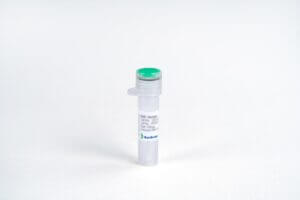
IL-8 (77aa)/CXCL8, Human
$90.56 Add to cart View Product DetailsInterleukin-8 (IL-8), also known as CXCL8, GCP-1 and NAP-1, is one of the first discovered chemokines and belongs to the CXCL family, in which the first two conserved cysteines are separated by one residue. In vivo, IL-8 exists in two forms: a 77 a.a. protein produced by endothelial cells, and the more active 72 a.a. protein produced by monocytes. The receptors for IL-8 are the seven-helical G-protein coupled receptors CXCR1 and CXCR2, exclusively expressed on neutrophils. The functions of IL-8 are to induce rapid changes in cell morphology, activate integrins, and release the granule contents of neutrophils. Thus, IL-8 can enhance the antimicrobial actions of defense cells. It is secreted by monocytes, macrophages and endothelial cells. IL-8 signals through CXCR1 and CXCR2 to chemoattract neutrophils, basophils, and T cells. IL-8 is also a potent promoter of angiogenesis. Other functions of this protein, such as involvement in bronchiolitis pathogenesis, have also been reported.
-

IP-10/CXCL10, Mouse
$155.25 Add to cart View Product DetailsTAFA-2 also named FAM19A2 belongs to the TAFA family of chemokinelike proteins. Like other members of the FAM19/TAFA family, with the exception of TAFA5, mature TAFA1 to 4 contain 10 regularly spaced cysteine residues. Human TAFA2 is 97% aa identical to mouse TAFA2. TAFA2 expression can be detected in the central nervous system (CNS), colon, heart, lung, spleen, kidney, and thymus, but its expression in the CNS is 50 to 1000fold higher than in other tissues. Within the CNS, TAFA2 expression is highest in the occipital and frontal cortex (3 to 10fold more abundantly expressed than in other cortical regions) and medulla. The biological functions of TAFA family members remain to be determined, but there are a few tentative hypotheses.
-

KGF/FGF-7, Human(CHO-expressed)
$155.25 Add to cart View Product DetailsKeratinocyte Growth Factor (KGF) is a highly specific epithelial mitogen produced by fibroblasts and mesenchymal stem cells. KGF belongs to the heparin binding Fibroblast Growth Factor (FGF) family, and is known as FGF-7. However, in contrast to the FGF-1, which binds to all known FGF receptors with high affinity, KGF only binds to a splice variant of an FGF receptor, FGFR2-IIIb. FGFR2-IIIb is produced by most of the epithelial cells, indicating that KGF plays roles as a paracrine mediator. KGF induces the differen-tiation and proliferation of various epithelial cells, including keratinocytes in the epidermis, hair follicles and sebaceous glands, and is responsible for the wound repairs of various tissues, including lung, bladder, and kidney.
-

M-CSF, Rat
$155.25 Add to cart View Product DetailsMacrophage-Colony Stimulating Factor (M-CSF), also known as Colony Stimulating Factor-1 (CSF-1), is a hematopoietic growth factor. It can stimulate the survival, proliferation and differentiation of mononuclear phagocytes, in addition to the spreading and motility of macrophages. In mammals, it exits three isoforms, which invariably share an N-terminal 32-aa signal peptide, a 149-residue growth factor domain, a 21-residue transmembrane region and a 37-aa cytoplasmictail. M-CSF is mainly produced by monocytes, macrophages, fibroblasts, and endothelial cells. M-CSF interaction with its receptor, c-fms, has been implicated in the growth, invasion, and metastasis of of several diseases, including breast and endometrial cancers. The biological activity of human M-CSF is maintained within the 149-aa growth factor domain, and it is only active in the disulfide-linked dimeric form, which is bonded at Cys63.
-

MCP-1/CCL2, Human
$99.19 Add to cart View Product DetailsCCL2, also known as monocyte chemotactic and activating factor (MCAF), was initially purified independently by two groups based on its ability to chemoattract monocytes. Subsequent to its cloning and sequencing, it became evident that this protein is also identical to the product of the human JE gene. The JE gene, originally identified in mouse fibroblasts, is a plateletderived growth factor (PDGF)inducible gene. The human CCL2 cDNA encodes a 99 amino acid residue precursor protein with a 23 residue hydrophobic signal peptide that is cleaved to generate the 76 residue mature protein. Natural CCL2 is heterogeneous in size due to the addition of Olinked carbohydrates and sialic acid residues. In addition to fibroblasts; tumor cells, smooth muscle cells, endothelial cells, and mononuclear phagocytes can also produce CCL2 either constitutively or upon stimulation by various stimuli. CCL2 is a member of the β (CC) subfamily of chemokines. Recently, the existence of MCP2 and MCP3 with 62% and 73% amino acid identity respectively, to CCL2 have been reported.
-

MCP-1/CCL2, Mouse
$94.88 Add to cart View Product DetailsChemokine (C-C motif) ligand 2 (CCL2) is also referred to as monocyte chemotactic protein 1 (MCP1) and small inducible cytokine A2. CCL2 is a small cytokine that belongs to the CC chemokine family. CCL2 recruits monocytes, memory T cells, and dendritic cells to the sites of inflammation produced by either tissue injury or infection. CCL2 is implicated in the pathogeneses of several types of disease characterized by monocytic infiltrates, such as psoriasis, rheumatoid arthritis and atherosclerosis. CCL2 is anchored in the plasma membrane of endothelial cells by glycosaminoglycan side chains of proteoglycans. CCL2 is primarily secreted by monocytes, macrophages and dendritic cells. CCL2 can signal through the CCR2 receptor.
-
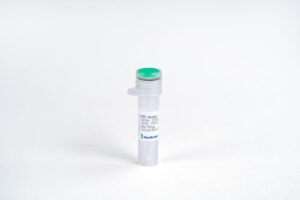
MIG/CXCL9, Mouse
$155.25 Add to cart View Product DetailsChemokine (C-X-C motif) ligand 9 (CXCL9), also known as monokine induced by interferon gamma (MIG), is a small cytokine belonging to the CXC chemokine family.The CXCL9 gene is induced in macrophages and in primary glialcells of the central nervous systemin response to IFNγ. CXCL9 has been shown to be achemo attractant for activated Th1lymphocytes and tumor-infiltrating leukocytes (TILs) but not for neutrophils or monocytes. CXCL is also involved in other cellular activities including inhibition of tumor growth, angiogenesis, and inhibition of colony formation of hematopoietic progenitors. CXCL9 is closely related to two other CXC chemokines, CXCL10 and CXCL11.CXCL9, CXCL10 and CXCL11 all elicit their chemotactic functions by interacting with the chemokine receptor CXCR3.
-

MIP-1α/CCL3, Mouse
$99.19 Add to cart View Product DetailsMIP-1 Alpha, also known as CCL3, G0S19-1 and SCYA3, LD78 alpha, is an inflammatory chemokine. MIP-1α belongs to the CCL chemokine family, and shares 68% homology with MIP-1β. The mature form of MIP-1α contains 69 amino acids, exists as dimers in solution, and tends to undergo reversible aggregation. It binds to CCR1, CCR4 and CCR5, and participates in the host response to invading pathogens by regulating the trafficking and activation of inflammatory cells, such as macrophages, lymphocytes, NK cells and dendritic cells. MIP-1 alpha polymorphisms are associated with HIV susceptibility or resistance. Recombinant MIP-1 alpha induces a dose-dependent inhibition of HIV and SIV infection. Upon stimulation by endogenous and exogenous agents such as Interleukin-1β, Interferon-γ, and lipoteichoic acid from gram-positive bacteria, monocytes are able to secrete significant amounts of MIP-1α. MIP-1α augments the adhesions of T lymphocytes, monocytes, and neutrophils to vascular cell adhesion molecule 1. Additionally, in wounds, MIP-1α chemoattracts macrophages in order to accelerate the tissue repair process.
-
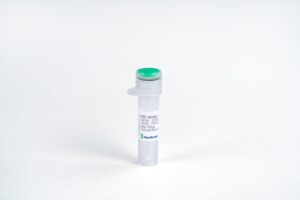
MIP-2/CXCL2, Mouse
$99.19 Add to cart View Product DetailsChemokine (C-X-C motif) ligand 2 (CXCL2) is a small cytokine belonging to the CXC chemokine family that is also referred to as macrophage inflammatory protein 2-alpha (MIP2-alpha), Growth-regulated protein beta (Gro-beta) and Gro oncogene-2 (Gro-2). CXCL2 is secreted by monocytes and macrophages and is chemotactic for polymorphonuclear leukocytes and hematopoietic stem cells. CXCL2’s amino acid sequence is 90% identical to the amino acid sequence of related chemokine, CXCL1. CXCL2 signals through the CXCR2 receptor.
-

MIP-3α/CCL20, Human
$99.19 Add to cart View Product DetailsMacrophage Inflammatory Protein-3 (MIP-3α), also known as chemokine (C-C motif) ligand 20 (CCL20) or liver activation regulated chemokine (LARC), is a small cytokine belonging to the CC chemokine family. MIP-3α is expressed in the liver, lymph nodes, appendix, PBL and lung and can signal through the CCR6 receptor. It is strongly chemotactic for lymphocytes and weakly attracts neutrophils. MIP-3α is implicated in the formation and function of mucosal lymphoid tissues via chemoattraction of lymphocytes and dendritic cells toward the epithelial cells surrounding these tissues. Additionally, it promotes the adhesion of memory CD4+ T cells and inhibits colony formation of bone marrow myeloid immature progenitors.
-

MIP-3α/CCL20, Human(CHO-expressed)
$86.25 Add to cart View Product DetailsMacrophage Inflammatory Protein-3 (MIP-3α), also known as chemokine (C-C motif) ligand 20 (CCL20) or liver activation regulated chemokine (LARC), is a small cytokine belonging to the CC chemokine family. MIP-3α is expressed in the liver, lymph nodes, appendix, PBL and lung and can signal through the CCR6 receptor. It is strongly chemotactic for lymphocytes and weakly attracts neutrophils. MIP-3α is implicated in the formation and function of mucosal lymphoid tissues via chemoattraction of lymphocytes and dendritic cells toward the epithelial cells surrounding these tissues. Additionally, it promotes the adhesion of memory CD4+ T cells and inhibits colony formation of bone marrow myeloid immature progenitors.
-

Noggin, Mouse(CHO-expressed)
$94.88 Add to cart View Product DetailsNoggin, also known as NOG, is a homodimeric glycoprotein that bindsto and modulates the activity of TGF-beta family ligands. It is expressed in condensing cartilage and immature chondrocytes. Noggin antagonizes bone morphogenetic protein (BMP) activities by blocking epitopes on BMPs needed for binding to their receptors. Noggin has been shown to be involved in many developmental processes, such as neural tube formation and joint formation. During development, Noggin diffuses through extracellular matrices and forms morphogenic gradients, regulating cellular responses dependent on the local concentration of the signaling molecule.
-

RANTES/CCL5, Human(HEK 293-expressed)
$86.25 Add to cart View Product DetailsChemokine (C-C motif) ligand 5(CCL5), also known as RANTES (Regulated upon activation, Normal T cell Expressed and presumable Secreted) is a CC-chemokine that can signal through the CCR1, CCR3, CCR5 and US28 (cytomegalovirus receptor) receptors. RANTES is chemotactic for T cells, eosinophils, and basophils, and plays an active role in recruiting leukocytes in inflammatory sites. With the help of specific cytokines (i.e., IL-2 and IFN-γ) that are released by T cells, RANTES induces the proliferation and activation of certain natural-killer (NK) cells to form CHAK (CC-Chemokine-activated killer) cells. RANTES is also an HIV-suppressive factor released from CD8+ T cells. This chemokine has been localized to chromosome 17 in humans. It has the capability to inhibit certain strains of HIV-1, HIV-2 and simian immunodeficiency virus (SIV).
-

S100A1, His, Human
$293.25 Add to cart View Product DetailsS100 calcium-binding protein A1 (S100A1) is a small calcium binding protein with EF-hand structures and belongs to the S100 family. S100 proteins include at least 25 members which are located as a cluster on human chromosome 1q21. S100A1 is found in the heart, skeletal muscle, brain, and kidney.S100A1 mainly resides on the sarcoplasmic reticulum, mitochondria and myofilaments. S100A1 may function in stimulation of Ca2+ induced Ca2+ release, inhibition of microtubule assembly, and inhibition of protein kinase C-mediated phosphorylation. Reduced expression of this protein has been implicated in cardiomyopathies.
-

SDF-1α/CXCL12, Mouse
$194.06 Add to cart View Product DetailsStromal-Cell Derived Factor-1 alpha/ CXCL12 (SDF-1α) and SDF-1β, members of the chemokine α subfamily that lack the ELR domain, were initially identified using the signal sequence trap cloning strategy from a mouse bone-marrow stromal cell line. These proteins were subsequently also cloned from a human stromal cell line as cytokines that supported the proliferation of a stromal cell-dependent pre-B-cell line. SDF-1α and SDF-1β cDNAs encode precursor proteins of 89 and 93 amino acid residues, respectively. Both SDF-1α and SDF-1β are encoded by a single gene and arise by alternative splicing. The two proteins are identical except for the four amino acid residues that are present in the carboxy-terminus of SDF-1β and absent from SDF-1α. SDF-1/PBSF is highly conserved between species, with only one amino acid substitution between the mature human and mouse proteins. SDF-1/PBSF acts via the chemokine receptor CXCR4 and has been shown to be a chemoattractant for T-lymphocytes, monocytes, pro- and pre- B cells, but not neutrophils. Mice lacking SDF-1 or CXCR4 have been found to have impaired B-lymphopoiesis, myelopoiesis, vascular development, cardiogenesis and abnormal neuronal cell migration and patterning in the central nervous system.
-

Shh, Human
$163.88 Add to cart View Product DetailsMembers of the Hedgehog (Hh) family are highly conserved proteins which are widely represented throughout the animal kingdom. The three known mammalian Hh proteins, Sonic (Shh), Desert (Dhh) and Indian (Ihh) are structurally related and share a high degree of amino-acid sequence identity (e.g., Shh and Ihh are 93% identical). The biologically active form of Hh molecules is obtained by autocatalytic cleavage of their precursor proteins and corresponds to approximately the N-terminal one half of the precursor molecule. Although Hh proteins have unique expression patterns and distinct biological roles within their respective regions of secretion, they use the same signaling pathway and can substitute for each other in experimental systems.
-

TGF-α, Human
$51.75 Add to cart View Product DetailsProtransforming Growth Factor-alpha (TGF-alpha), also known as sarcoma growth factor, TGF-type I and ETGF, is a member of the EGF family of cytokines. It is expressed in monocytes, brain cells, keratinocytes and various tumor cells. ProTGF-alpha signals through EGFR and acts synergistically with TGF-beta to promote the proliferation of a wide range of epidermal and epithelial cells. It may function as either a membrane-bound ligand or a soluble ligand. Membrane-bound proTGF-alpha plays a role in cell-cell adhesion and juxtacrine stimulation of adjacent cells. The soluble form of the cytokine is released from the membrane-bound form by proteolytic cleavage and acts as a mitogen for cell proliferation.


